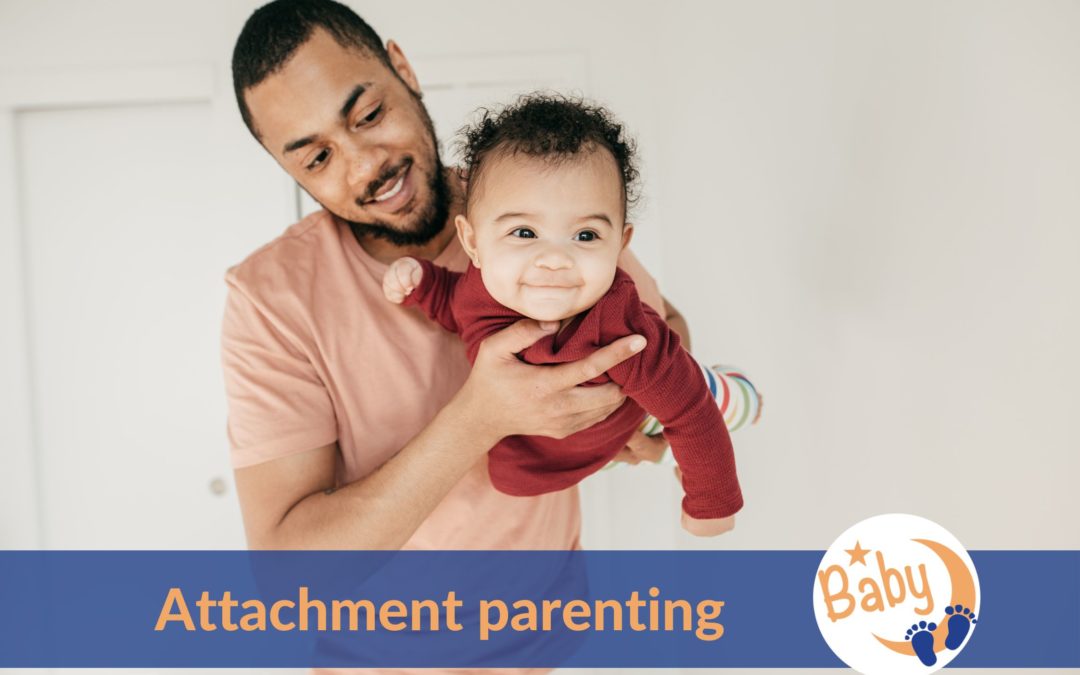Attachment parenting
What we hear most often today is the concept of attachment parenting – a notion interpreted in the early 2000s by the American paediatrician William Sears and his wife, nurse Martha Sears as a
“parenting approach that emphasizes responding sensitively to the needs of babies and children”.
However, many of their ideas come from parenting their own 8 children and from their paediatric practice and less from solid scientific and representative studies.
Dr. Sears and his wife promoted a set of 7 practices they call the Baby Bs: “birth bonding, breastfeeding, baby-wearing, bedding close to the baby, belief in the baby’s cry, balance and boundaries and beware of baby trainers.” ![]()
Although there are many good ideas in their approach (in contrast with a colder and more distant way of parenting in the early times), the reality is all these B concepts do not necessarily lead to “secure attachment” as described by the early research of the attachment theory.
More exactly, we can try breastfeeding on demand, constant baby-wearing and contact naps, bed-sharing and all the rest, but if we are not attuned and responsive to our baby’s needs, we are not offering the secure base they need to thrive and develop well.
“What matters more is not the method of feeding the baby (breastfeeding or formula), but the quality of interaction we have with our baby or the quality of attachment”
says Alan Sroufe, a developmental psychologist at the Institute for Child Development at the University of Minnesota.
Let’s also consider that babies who are around a severely sleep-deprived mother, suffering from postpartum depression for example, have higher cortisol levels and show more distress, which leads to poor attachment. On the other hand, rested parents are happier and more responsive parents, conscious and attuned to their baby, most of the time.
At the same time, parents who respond emotionally to every single sound or wish (not necessarily a need) of their baby, often over-react, which could be quite exhausting and counter-productive for everybody.
“There’s a big difference between a ‘tight’ connection and a secure attachment,”
Sroufe explains further. In his opinion,
“a tight attachment—together all the time—might actually be an anxious attachment.”
To my understanding, what matters the most for a child is to feel the emotional responsiveness and availability of their caregiver, a balanced & conscious, but not a perfect person, capable of repairing breaks and attunement, while still offering their children the trust they need to develop both confidence and resilience skills in life.
Even if attachment is essential, especially in the early stages of life, for safety, stress regulation, adaptability and resilience of a child, I also think it is not a destiny.
A child’s development depends on so many other things in life like what else comes along the way, on environment, epigenetics (how behaviour and environment can cause changes that affect the way our genes work), neural plasticity (capacity of the nervous system to modify itself, functionally and structurally, in response to experience and injury), experiences, relationships, therapy and even on discovering your mission in life.
So, every time you think you are not good enough for your baby, think again! Although we cannot control everything, we still have the chance to repair our mismatches, most of the time, if we are consciously aware of them.
Remember also:
“You are the best parent for your child!”
If you feel like you want to dive more into the topic of attachment parenting and baby sleep, read the next article on this topic and then book a free 20 min. Discovery Call so we can chat.
